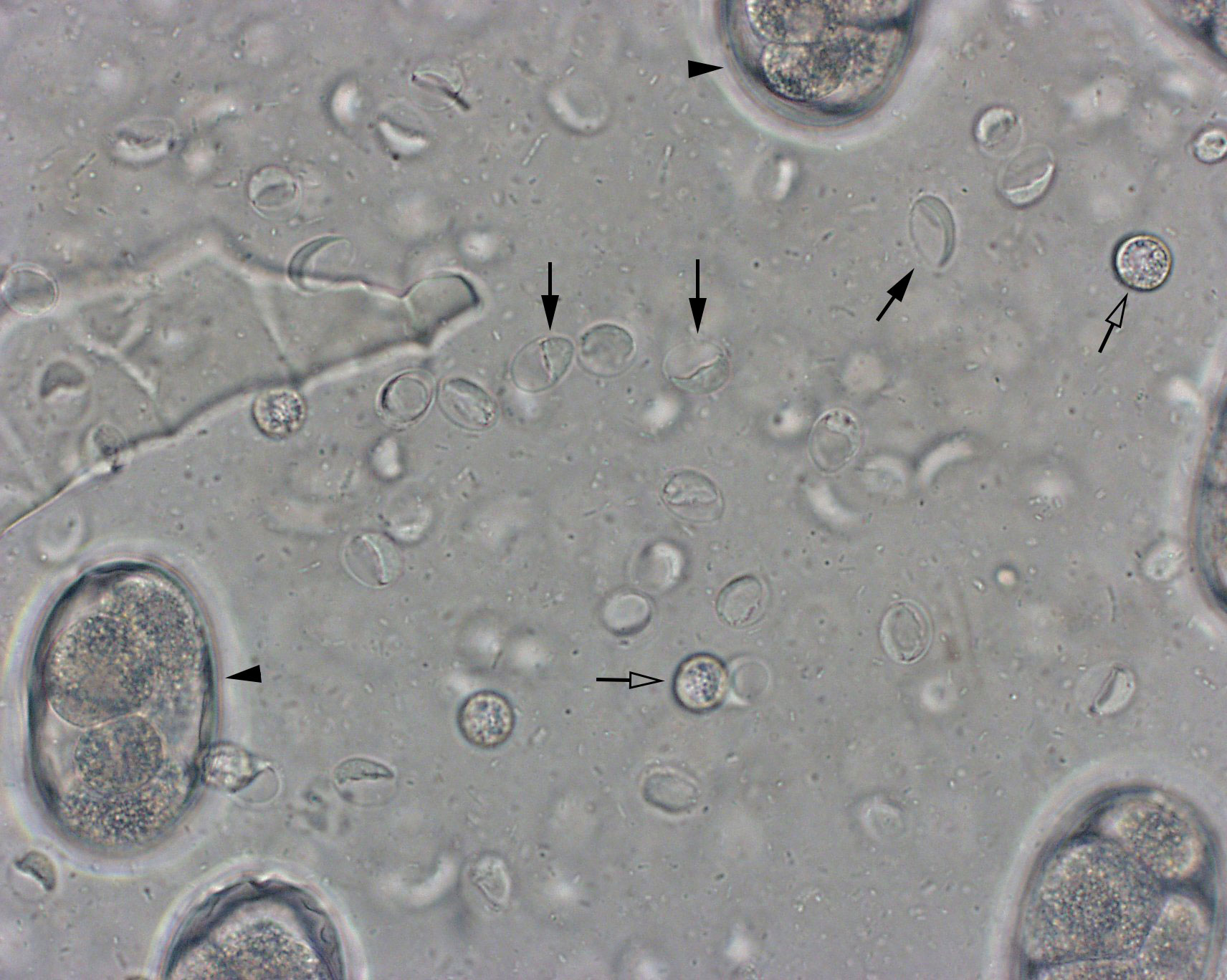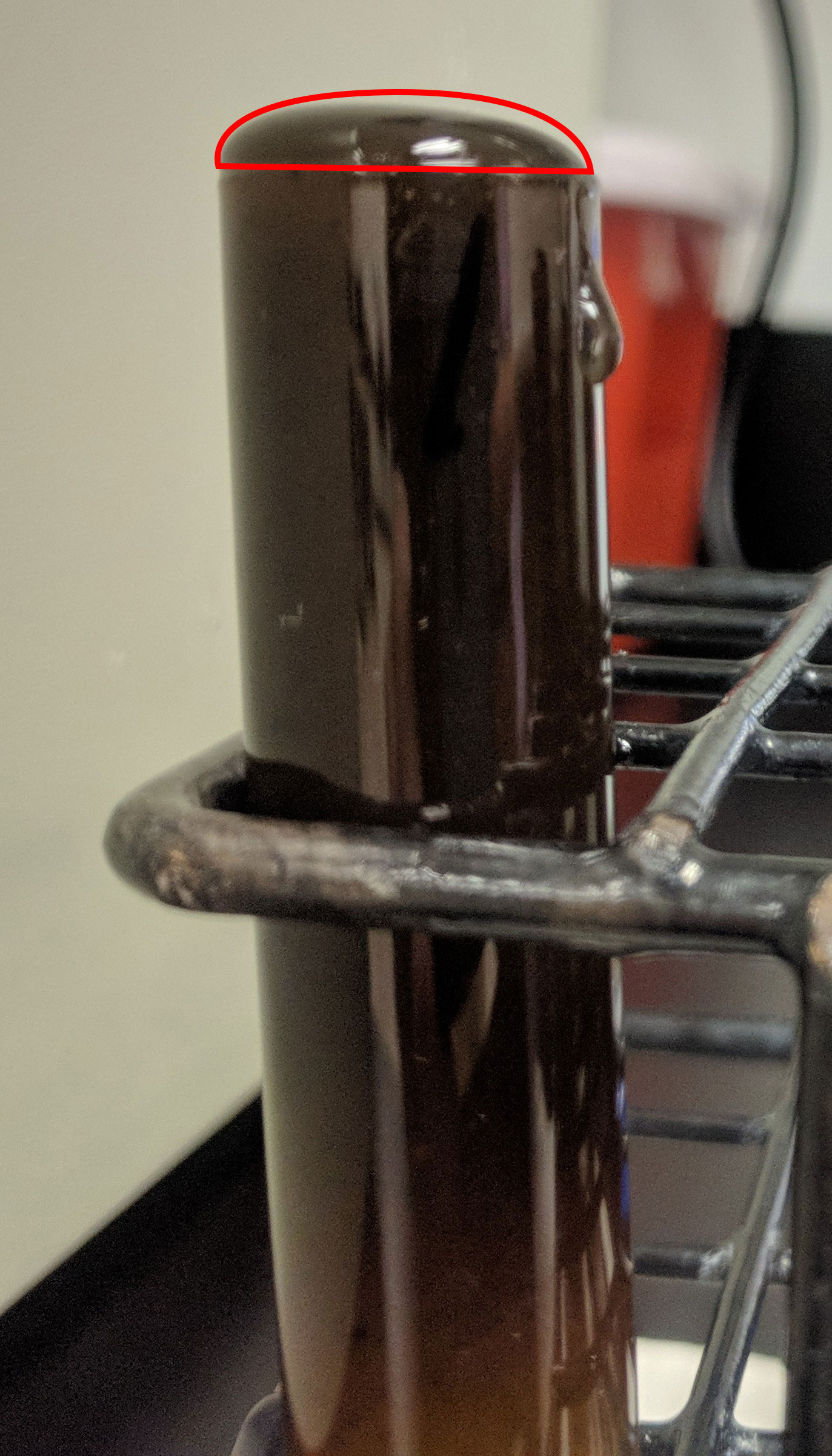
Steps to Increase the Value of Fecal Diagnostics
By Drs. Brian Herrin and Michael Dryden
A high-quality fecal float is an important part of a thorough annual examination and a useful diagnostic tool for pets experiencing GI or Respiratory disturbances. The key to this procedure’s utility lies in the quality with which it is performed. In this article, we will discuss some of the key factors involved in performing a diagnostic-quality fecal flotation.
Centrifugation is Necessary
While we have known for some time that centrifugal fecal flotation is superior to passive flotation, perceived cost, space, and time concerns have kept many veterinary practices from switching to this method. The cost of a centrifuge can be recovered quite rapidly due to increased sensitivity of the diagnostic technique, resulting in more animals being diagnosed with parasitic infections. By accurately diagnosing patients with parasites, the veterinarian will then be prescribing medically-necessary treatments and possibly follow-up visits to monitor the condition. This not only benefits the patient, who receives a higher level of care, but also increases your contact time with that pet and owner. The table below shows the percent of positive fecal flotations for three major canine parasites, roundworms, whipworms, and hookworms, from a known positive sample tested by parasitology students at K-State. These results highlight the major difference between passive and centrifugal flotation techniques and their ability to detect parasites in feces, especially canine whipworms. Passive flotation techniques, such as the OVASSAY®, are no longer considered acceptable diagnostic techniques.
|
Parasite |
Passive Flotation with Sheather’s sugar (sg=1.275) |
Centrifugal Flotation with Sheather’s Sugar (sg= 1.275) |
Centrifugal Flotation with Zinc Sulfate (sg=1.18) |
|
Toxocara canis |
60% |
95% |
93% |
|
Trichuris vulpis |
38% |
96% |
80% |
|
Ancylostoma caninum |
70% |
96% |
95% |
What you need: A dedicated centrifuge that can spin at 1000-1500 RPM, glass centrifuge tubes (or plastic if you are not reusing tubes)
Doggy bag, please?
The next step to performing a high quality fecal is using an appropriate amount of feces. We recommend using 4-5 grams for a standard fecal (Hint: A Hershey’s Kiss weighs 4.6 grams). Accurate fecal flotations can be run with a minimum of 1 gram of feces, but at that size or lower, the ability to detect parasites may be diminished. The large fecal wands/loops only provide a 0.5-gram sample and are not adequate for a good fecal float. If your practice calls, texts, or e-mails owners to remind them of their appointment, this would be an excellent time to remind them to pick up a fresh fecal sample to bring in during their appointment. Alternatively, you can give them a container at the appointment and allow them to bring back a fresh sample at their convenience. Try incorporating owner-submitted fecals into your annual wellness exam and see which style works best for your practice.
What you need: A 4-5 gram sample of fresh feces
The Correct Solution for the Problem
Solutions for fecal flotations are either salt or sugar solutions of a known specific gravity that can be commercially purchased (our favorite option!) or made in-clinic. Solutions with a high specific gravity (>1.2) are good for floating heavy parasite eggs, like whipworms, but will distort Giardia spp. (Figure 1). cysts. Conversely, solutions with a specific gravity less than 1.2 are excellent for identifying protozoal organisms, but are not good at floating the heavier parasite eggs.
The two most useful solutions are a Sheather’s sugar solution (SG= 1.275) and zinc sulfate (SG= 1.18). We recommend using the sugar solution for annual wellness exams, as it has the ability to float a wide variety of parasites, while zinc sulfate is the solution of choice for pets that are suspected to have Giardia spp. infections. In addition to these solutions, a validated hydrometer is a useful item to have to verify the specific gravity of your solutions.
Just recently, we at KSVDL received a shipment containing an entire case of a commercially produced flotation solution that had a specific gravity that was well below diagnostic quality (1.05). This can be avoided by routinely checking the specific gravity by placing the hydrometer into the solution and measuring where the top of the solution crosses the instrument (Figure 2). Quality diagnostics require routine monitoring and inspections, and a hydrometer is an inexpensive way to ensure your fecals are of the highest quality.
What you need: Sugar solution specific gravity = 1.275, Zinc sulfate solution specific gravity = 1.18, hydrometer
Set It but DON’T Forget It
We now recommend that fecals performed with a sugar solution sit for at least 5-10 minutes after spinning in the centrifuge. This is as easy as leaving the tubes in the centrifuge with the cover slips on for that time. The added time increases the sensitivity of the procedure by giving the heavier eggs more time to float to the coverslip. This added step should not be used for fecals performed with Zinc Sulfate, as the solution begins to crystalize quite rapidly, which can make reading and interpreting the slide difficult.
What you need: A timer
Fecal flotations are very commonplace in veterinary practice, and their utility can be overlooked. Performing a high-quality fecal flotation with centrifugation using appropriate sample size and solutions can be a very valuable and inexpensive diagnostic tool. If you have any questions regarding setting up your comprehensive parasite control program or fecal flotation station, feel free to contact us at the KSVDL.
Steps to perform a high-quality fecal flotation in practice
- Weigh out approximately 4-5 grams of fresh feces.
- Mix feces with 10-15ml of flotation solution
- Pour the mixture through cheesecloth or a tea strainer to remove debris.
- Pour strained mixture into a centrifuge tube creating a reverse meniscus (Figure 3).
- Place a coverslip on top of tube, making sure that it comes in contact with the solution.
- Centrifuge for 5 minutes at 1200-1500rpm.
- Let fecal set for 5-10 minutes.
- Carefully remove coverslip and place onto a clean slide.
For a short video explaining fecal centrifugation, please follow this link:
https://www.youtube.com/watch?v=mZunPcRr7C4
For more information on testing requirements or supplies contact Client Care at clientcare@vet.k-state.edu or 866-512-5650.
How to Maximize Your Canine Influenza Diagnostic Testing
Return to Index


